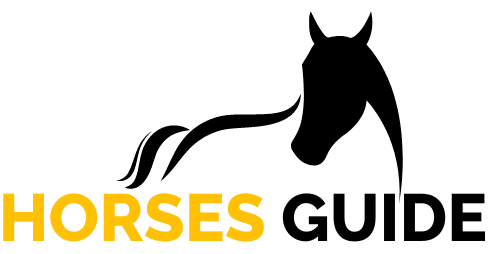Table of Contents
Wait, are you one of those who label the equine fellows as one group whenever you see them galloping in green pastures? Stop right there if you do so. This is because there are specific names given to groups of horses, whether they are alpha males, racing horses, or wild ones. So, you can’t label each group of horses as “herd”; it’s more than that. Let’s decode the different groups of horses, the names labeled to them, and the different types of horse groupings.
Standard Terms for a Group of Horses
Have a look at the brief table below:
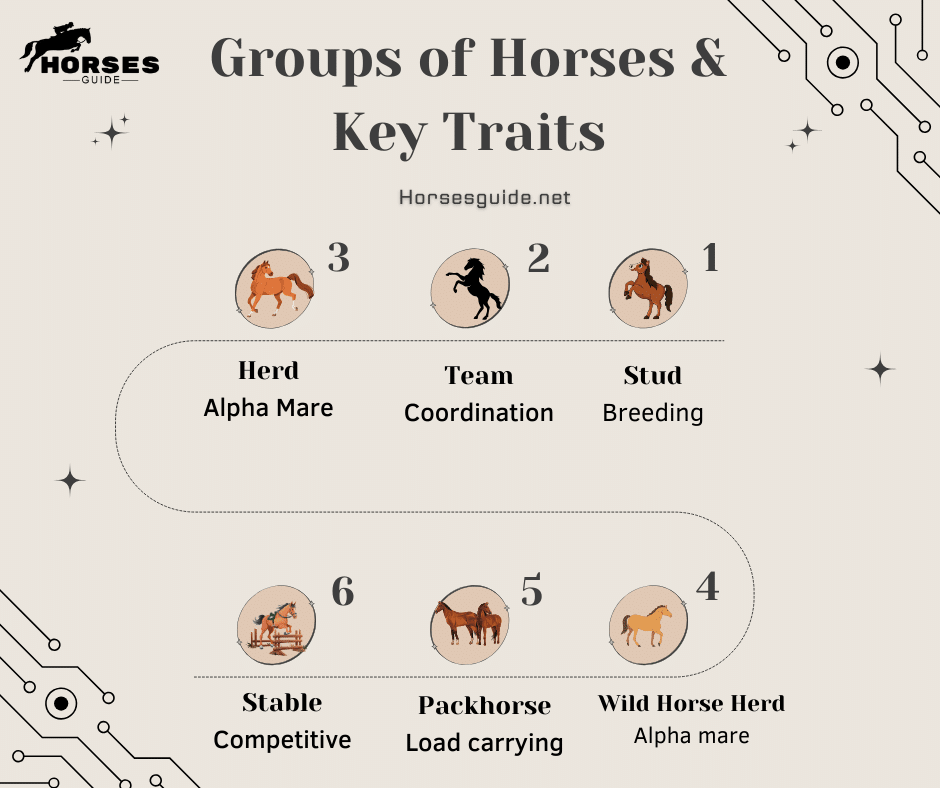
This section of the article focuses on common terms associated with different groups of horses.
Herd
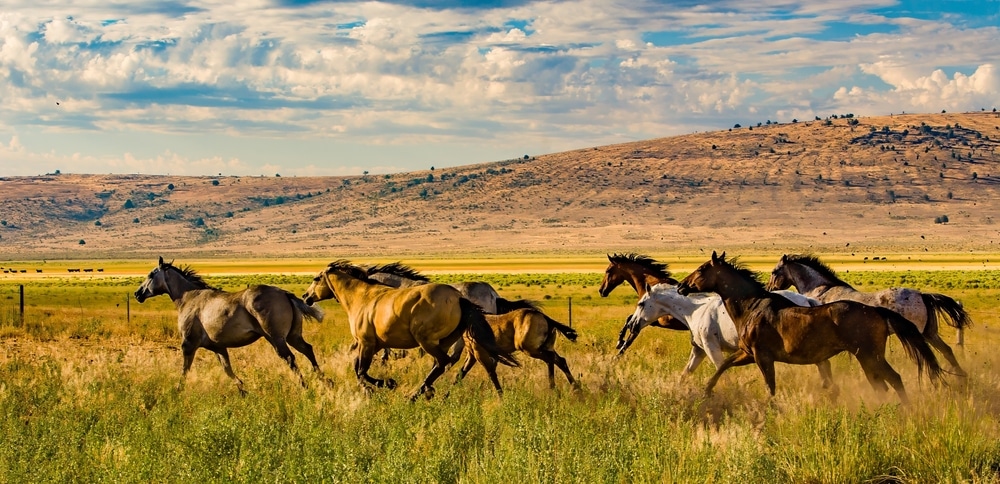
Folks, the most widely recognized term for a group of horses is called a herd of horses. This term applies to horses that live in both wild and domestic environments. Wild horses, for instance, naturally form groups for protection, social interaction, and survival. In such settings, a group of wild horses is often led by an alpha mare, while a male horse, usually a stallion, watches over and defends the group of horses.
Herds are essential in wild settings because wild horses are prey animals. A group of wild horses in a herd of horses can collectively stay alert to danger and help protect one another. This group, sometimes called a harras, ensures safety by working together to survive. Wild horses called mustangs exhibit this behavior.
Key Traits
- Led by an alpha mare.
- Provides safety and social interaction.
- Maintains a pecking order.
- Includes various age groups.
Team

Typically, a team of horses refers to a group of horses called together to work, often pulling carriages, plows, or other equipment. The term team of horses is more commonly used when horses called to work are harnessed for specific tasks, like agriculture or transportation. For example, a team of horses pulling a wagon or carriage consists of two or more horses positioned side-by-side.
In sports, a string of horses can refer to a group of horses used in different races or competitions. Each horse in the string of horses might have a specialized purpose, adding variety and efficiency to the team.
Key Traits
- Used for pulling and work.
- Trained to work in unison.
- Can consist of pairs or multiples.
- Focuses on efficiency.
Stud
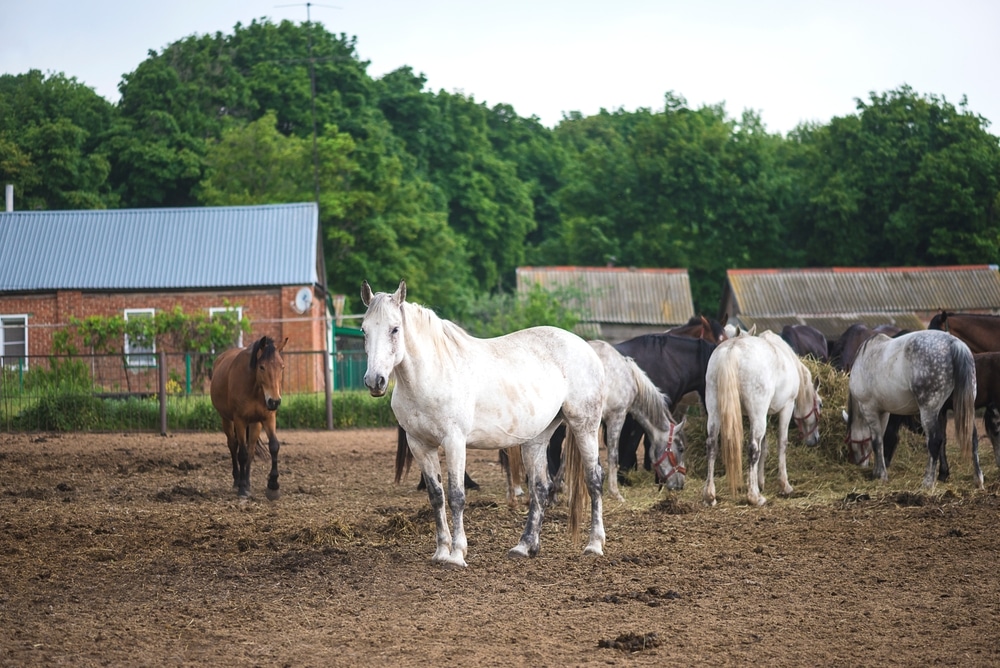
The next group comes with the coolest name. The term stud refers to a group of horses that are kept or bred for reproduction purposes. Typically, this refers to a group of stallions housed together. However, this group, sometimes called a harras, might also include mares. It’s crucial for breeding farms, as it helps maintain bloodlines and promote reproduction.
Key Traits
- For breeding purposes.
- Often includes stallions and mares.
- Maintains bloodlines.
- Managed breeding success.
Stable
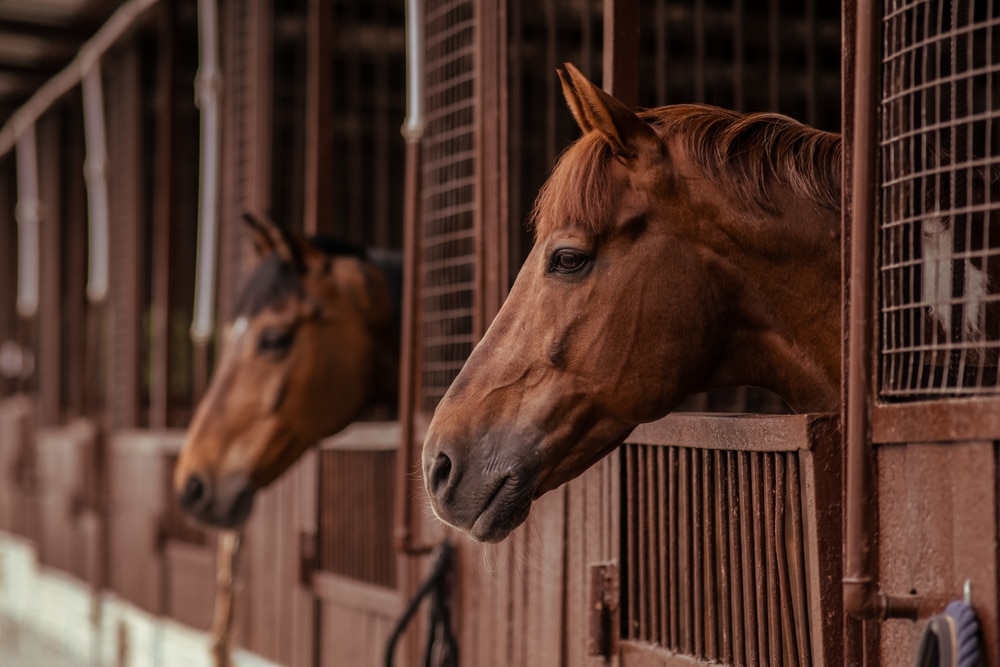
I think it’s the most common term for a group of horses. A stable of horses refers to a group of horses that belong to a particular owner, team, or trainer, especially in competitive contexts. A large group of prized horses often belongs to a stable, maintained specifically for racing, show jumping, or other equestrian sports.
Although a stable can refer to the physical building, it is also used as a collective noun for horses in this context.
Key Traits
- Group of competitive horses.
- Used in racing or sports.
- Housed and managed together.
- Focuses on training and performance.
Types of Horse Groupings

Having explored different groups of horses along with their meanings, let us dig deep into different types of horse groupings.
Wild Horse Herds
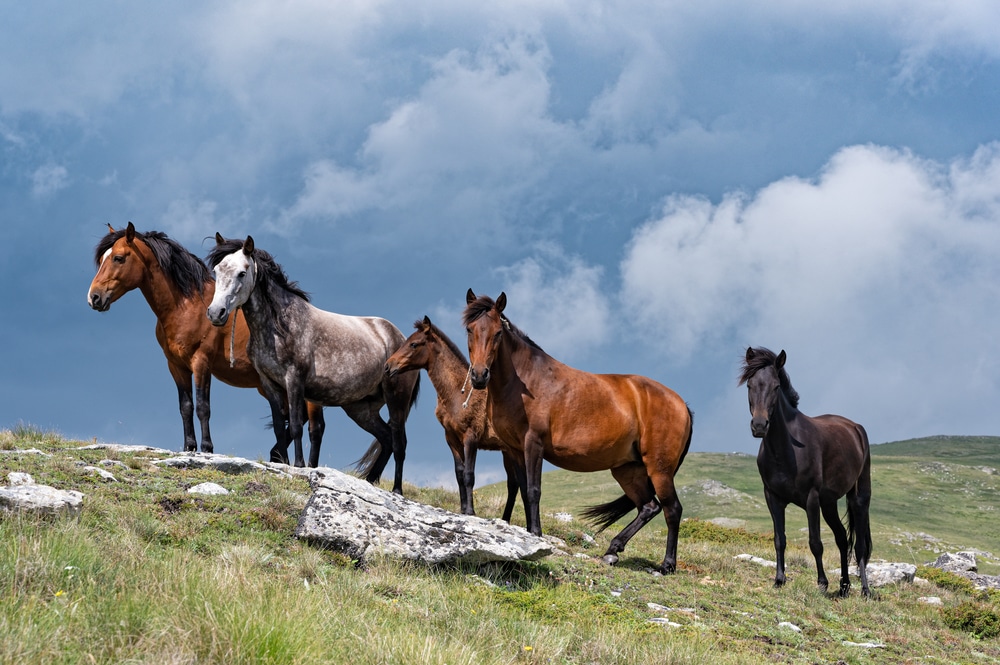
In the wild, horses called mustangs form a group of horses for protection. These wild horses often gather near a water hole, with a dominant alpha mare leading the herd. A troop of horses in the wild includes a stallion, mares, and their foals, ensuring protection and social order. This social structure helps the group of horses survive in the face of natural threats and predators.
In these wild horse herds, the alpha mare plays a crucial role in leading the herd of horses to safety and resources, such as a nearby water hole. The male horse (stallion) typically stays at the rear, watching over the herd and protecting it from potential threats.
Key Traits
- Include an alpha mare and stallion.
- Provides safety and social order.
- Maintains collective vigilance.
- Often found near a water hole.
Domestic Horse Herds

Horses that live in domestic environments also tend to form groups, reflecting the behavior of wild horses. They establish a pecking order that mirrors the dynamics seen in wild herds. This ensures that conflicts are minimized and that each horse knows its place in the social hierarchy.
Besides protection, a group of horses called a herd fosters social interaction and helps reduce stress, as horses are naturally inclined to live in groups rather than in isolation.
Key Traits
- Establishes social hierarchy.
- Strong social connections.
- Reduces stress and provides safety.
- Grouped in pastures or stables.
- Engages in grooming and play.
Packhorse Groups

A pack of horses refers to a group of horses used to carry supplies over long distances. These horses were commonly used in historical contexts for military campaigns, exploration, and trade. Even today, a pack or team of horses might be used in remote areas where vehicles can’t travel.
Key Traits
- Transports goods over distances.
- Historically used for trade and exploration.
- Carries loads and works together.
- Seen in rugged terrains.
Importance of Group Dynamics for Horses
Horses that live in groups, whether in the wild or domestic environments, rely on social structures to communicate and maintain order. A group of horses in the wild or domestically will often establish a pecking order, which reduces conflict and ensures that each horse understands its place in the hierarchy.
Furthermore, horses communicate through body language, vocalizations, and social behavior, ensuring the group functions smoothly.
Conclusion
Summing up what has been discussed so far, a group of horses is labeled with different names based on context. The most common term, called a herd, applies to both wild and domestic settings. However, other terms like team, stable, string of horses, and stud only apply depending on the group’s purpose or organization. Gaining an understanding of the dynamics and terminology of horse groups offers deeper insights into their behavior and social structures, both in the wild and domesticated environments.


